By Angus Dalton
He dined on bread, apple, banana and capsicum, a breakfast shared with his two wives as they shook off the dregs of tranquillisers. The trio of baboons had escaped into inner-city Camperdown the day before, thanks to a transport truck’s broken lock, before they were captured and sedated by a squad of police and Taronga Zoo staff.
Video of the baboons fleeing through the grounds of Royal Prince Alfred Hospital – where the male, dubbed Alfred, had been scheduled for a vasectomy – became a social media sensation. But the quirky news turned serious when it emerged the baboons came from a Sydney colony bred for biomedical research.

The escape of three baboons into the grounds of Royal Prince Alfred Hospital in Sydney helped prompt a NSW inquiry into animal research.
The incident in February 2020 thrust a spotlight on the often secretive world of animal research and ushered in a NSW parliamentary inquiry into the use of non-human primates and other animals in science.
The ethical scrutiny of that inquiry has now dovetailed with a recent scientific push backed by the CSIRO and $4.5 million from the state government to advance new, high-tech methods of studying health and testing new drugs without the need for lab rats and monkeys.
“That’s how we really got the inquiry up in the first place,” Animal Justice Party MP Emma Hurst said of the baboon breakout. “It gave a face and a name to the animals that people didn’t realise were actually having their bodies experimented on.” (Alfred eventually received his vasectomy so he could live with his wives without the risk of overbreeding at their research colony in Wallacia.)
Hurst, who before her election helped rehome guinea pigs and goats used in research, is one of the local advocates of a complete phase-out of animal experiments, following commitments by Britain and the EU to eventually end the practice where suitable alternatives are available.
Others worry that a move away from animal experiments would complicate safety checks for new drugs before they advance to human trials and risk Australia bleeding scientific talent to other jurisdictions with looser rules and less ethical scrutiny.
The issue underscores the thorny ethical question of how much we prioritise human life over non-human suffering. Cosmetic testing has been banned in many jurisdictions, including Australia since 2020, spurred by the view that human vanity doesn’t justify animal discomfort.
Meanwhile, worldwide, rhesus macaques are poisoned with a brain-damaging toxin to simulate Parkinson’s in the hunt for a cure. Mice are electrified, starved, turned transparent, hooked on meth, spliced with cancerous tumours and infected with flesh-eating ulcers. Zebrafish are given melanoma and mental disorders, while the lungs, hearts and kidneys of pigs have been transplanted into baboons (the Sydney colony is involved in such experiments).
Although the details can be confronting, the vast majority of life-saving medical triumphs, from cancer treatments to the curtailing of HIV, are built on such work. But fear of backlash keeps many scientists from speaking openly about their methods, blunting the public’s chance to understand why animal research is needed and hampering open debate.
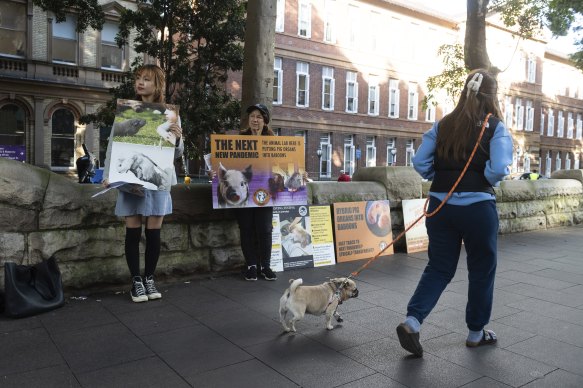
Activists hold a monthly vigil out the front of RPA hospital opposing forms of animal research including xenotransplantation.Credit: Rhett Wyman
Transparency: ‘A fairly crazy state of affairs’
“It’s never easy, where you have a culture of people feeling that the best way to protect themselves and their work and their livelihoods is to keep quiet and hope that nobody pays them too much attention,” said Bella Lear, chief executive of Understanding Animal Research Oceania, which advocates for the role of animals in research.
“One of the things that I think is really important is to have national statistics around the use of animals in research that are actually meaningful. Currently, everything is done on a state-by-state basis, so Australia doesn’t even really know how many animals it uses in research. That’s a fairly crazy state of affairs.”
In NSW, nearly 2.3 million animals were killed between 2010 and 2022 in research procedures (of which 91 per cent were anaesthetised beforehand). About 680,000 underwent some kind of surgery, and 545,000 were subjected to a “moderate or large degree” of distress, including pain or isolation.
According to the latest annual figures for NSW, 42 primates underwent surgery during experiments in 2022. Just under 50,000 animals (mostly fish, guinea pigs and mice) fell under the “animal unconscious without recovery” category, which includes those euthanised for dissection and others anaesthetised, experimented on and then killed before they regain consciousness.
About 6500 animals, mostly mice, were part of “death as an endpoint” experiments, where animals die as part of the procedure. Lethality testing, for example, involves exposing animals to a substance and seeing how many die to determine its toxicity.
The 2021 inquiry heard evidence that animal testing was crucial to life-saving treatments including gene therapies and the fast-tracking of COVID-19 vaccines, which were tested on monkeys early in the pandemic. But it also led to the banning of two types of experiments involving rats and mice due to cruelty concerns.
One was the forced swim test, where rats or mice are placed in a tank of water to see how long they struggle until becoming immobile (about six minutes for mice, 15 for rats) to model depression, with the idea that treatment with antidepressants should see the animals swim for longer before giving up. The other ban targeted experiments where animals are restrained and forced to inhale smoke.
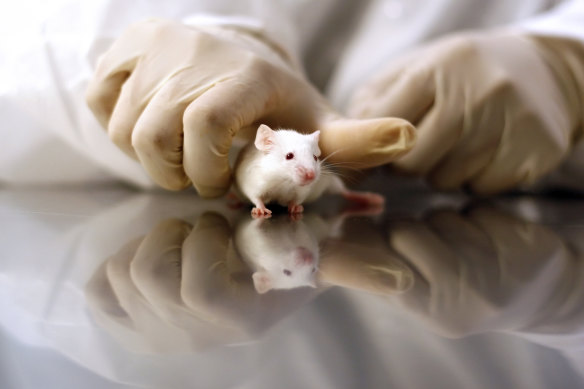
Rats, mice, guinea pigs and zebrafish are all commonly used animals in the lab.Credit: iStock
Lear believes the NSW ban, which went through in March, was unnecessary given the National Health and Medical Research Council had already issued a statement last December banning the use of the swim test as a model of human depression and most forced smoke inhalation experiments.
“My problem with the particular legislation that went through in NSW was that it overrode that guidance and brought in a legislative ban on top of the guidance. So essentially, it overrode the scientific decision, and it took a political decision that trumped it,” she said. Sydney research centre the Centenary Institute told Cosmos in January it was “disappointed” by the NHMRC ban, which affected its research into respiratory diseases such as emphysema, asthma and pulmonary fibrosis.
Smoke tests are warranted, in some cases, as a mechanism for studying one of the biggest drivers of cancer in humans, said Professor Brian Oliver from UTS and the Woolcock Institute of Medical Research. Testing tobacco on mice was banned in his native UK more than two decades ago.
“But in the same breath, they freely allow cancer models in mice,” Oliver said. “So you’re allowed to pump a mouse full of carcinogens to induce a cancer they wouldn’t normally get, and that’s okay, but the smoke exposure isn’t. So you have a bit of a paradox there as to what’s allowable and what isn’t.”
Oliver, a respiratory researcher, recently studied the effect of vape smoke on pregnant mice and found the pups were born with chronic lung inflammation, bad kidneys and livers, and neurological issues. The research posed an important challenge to obstetricians in Britain and Europe, who urged women who smoked to swap to vaping during pregnancy.
“Whether you’re doing research on animals or humans, you’ve got to ask yourself whether what you’re doing is ethical and whether the risks that are taken are justified,” he said, adding scientists were not without empathy for the animals in their experiments. “If something happens and an animal’s suffering, I’ve seen researchers cry.”
Ethics, organoids, and ‘sci-fi’ tech
Ethics committees made up of a vet, researcher, animal welfare expert and a layperson approve all animal experiments in NSW. They’re tasked with ensuring research adheres to the “triple R” maxim, which urges scientists to reduce animal testing, refine experiments to minimise pain and distress, and replace animal use where possible.
Those goals should become easier with a new $4.5 million program launched in July by Medical Research Minister David Harris called the Non-Animal Technologies Network (NAT-Net), a group of research institutions working towards boosting the development of new models such as organoids. These blobs of human tissue grown from stem cells mimic brains, hearts, livers and lungs in miniature.
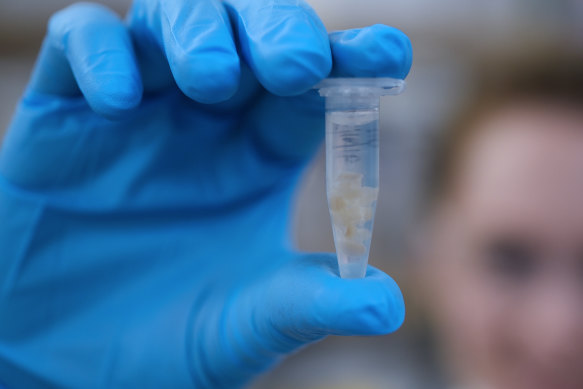
Organoids are used in a range of medical research – these are tiny bundles of brain cells.Credit: The University of Queensland/AIBN
The NAT-Net came off the back of a CSIRO report that found such technologies could generate $1.5 billion and 5000 jobs.
Testing directly on human cells offered scientific advantages, not just ethical, said Greg Williams, who leads the CSIRO’s health and biosecurity consulting portfolio.
“The potential quality of these new technologies is enough to stand on its own as a reason to pursue it,” Greg Williams, who leads the CSIRO’s health and biosecurity consulting portfolio, said. “They can be better than animal models. They can, in theory, be cheaper and faster.”
Associate Professor Adam Hill from the Victor Chang Institute – one of the foundational partners of NAT-Net – studies heart arrhythmia using human tissues grown from stem cells along with computational or “in silico” models to predict which drugs might induce heart flutters as a side effect.
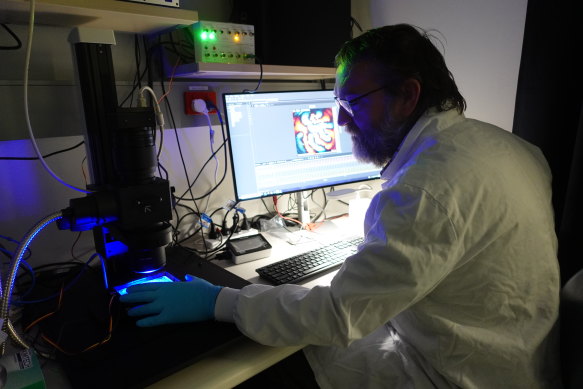
Associate Professor Adam Hill mapping arrhythmias using engineered heart tissue grown from stem cells.Credit: The Victor Chang Cardiac Research Institute
“Both of those toolboxes, if you will, fall under the umbrella of non-animal technology,” he said.
Hill’s team grows segments of heart tissue into centimetre-wide sheets large enough to study the spiral of electrical activity that induces heart arrhythmia.
Associate Professor Anai Gonzalez-Cordero from the Children’s Medical Research Institute, another NAT-Net partner, plans to take Hill’s heart tissue organoids and add blood vessels. Bit by bit, the network hopes to graft different organoids together to create multi-system models of human biology.
“The first scientific question the groups that form the network will address is: can we evolve this technology even further and put organs together?” Gonzalez-Cordero said.
Another option was “organ on a chip” technology – the “most sci-fi” advance, Williams said. The devices resemble computer chips with channels carved into them that host human cells, and researchers can use them to simulate the chemistry of organs and tissues.
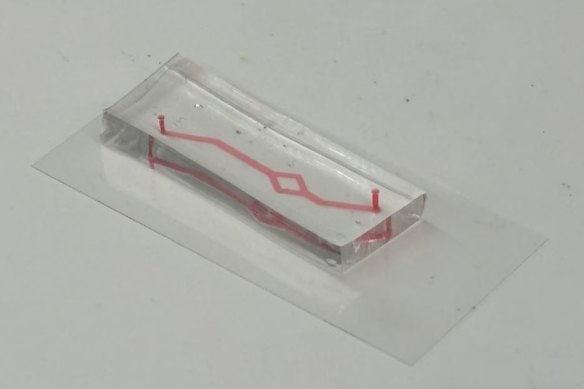
Looks like a USB, acts like an organ: the “blood vessel on a chip” unveiled by Sydney scientists earlier this year that could be used to test new drugs for heart disease.Credit: Charles Perkins Centre/University of Sydney Nano Institute.
University of Sydney scientists unveiled a “blood vessel on a chip” in July, for example, that mimics high blood flow and inflammation, the early stages of heart disease. The chip could allow detailed cellular observations a biopsy of a lab rat or monkey artery couldn’t glean.
Are new drugs possible without lab rats?
But there are realms of research that can’t happen without animals, including pregnancy studies.
“The basic problem is that organoids, whilst they are increasing in complexity, don’t fully replicate the complexity of a human,” Oliver said. “You can’t make an organoid copulate and reproduce. It’s just not going to happen.”
Animals are also used for toxicology screenings to ensure experimental drugs are safe to advance to human trials. Organoids can accelerate this process, but in most cases, data from animal tests is sought before testing in people.
“If I was going to be given an experimental drug, and the only safety protocols have been applied to were organoid or cell models, I’d be really scared about whether that drug truly is safe,” Oliver said.
“I don’t want to be the guinea pig of working out whether something’s safe or not when that could easily be done in an animal and quite reasonably predict the likely response in humans.”
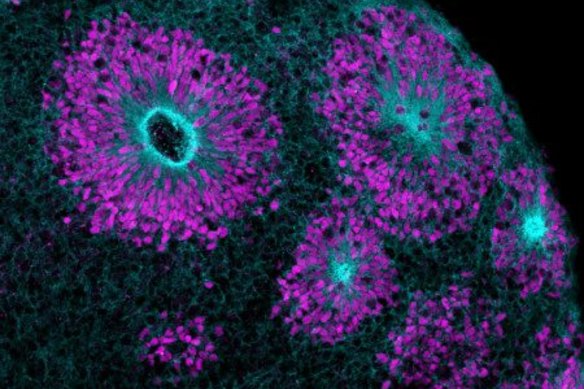
A brain organoid produced by the Children’s Medical Research Institute’s Stem Cell & Organoid Facility.Credit: Children's Medical Research Institute
There is, however, movement in this space. In 2022, the Food and Drug Authority in the US removed the mandate that demanded drugs be tested on animals before human trials.
Part of NAT-Net’s scope is regulatory, and it aims to improve the TGA’s acceptance of data from non-animal models to support new drug approvals.
“I think there’s a lot of work in providing clarity on those TGA guidelines and aligning with changes in the US,” Rachel Smith, chief executive of Animal-Free Science Advocacy, said. The TGA said it does accept evidence from cell-based and in silico, or computer, models but was working with the FDA on a more consistent approach.
Smith was heavily involved in the NSW inquiry, which found a lack of transparency around animal research and the way data was reported in the state was hampering public debate. Since 2019, the fate of dogs and cats must be reported. But getting specific information about the types of tests conducted was challenging, she said.
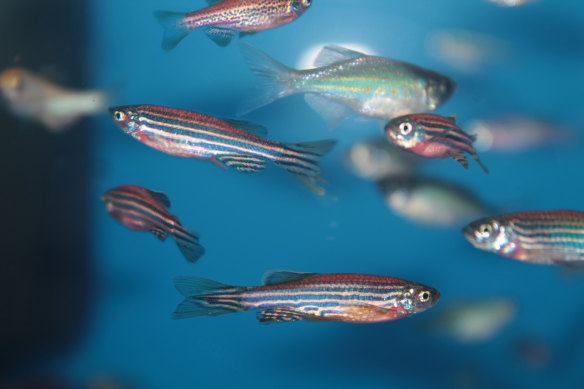
Zebrafish: the unassuming aquarium dwellers that can regrow hearts, fins and spinal cords and are one of the most-tested lab animals.Credit: iStock
Despite the push to move away from animal research, the number of animals used in experiments in NSW hasn’t fallen since 2010, although in 2021 and ’22, there was a decrease in those killed or subjected to significant distress or pain.
“The broad consensus is that animal models will, for the foreseeable future, still be a really important part of medical research,” Williams said. “This isn’t a short-term complete replacement story. This is, how can we be more sensible about where and when we use animals?”
Improving human health depended on using all the tools available, Oliver said.
“Some things are very appropriate to look at in organoids. Some things are totally inappropriate to look at organoids. That’s where the balance comes in – I think people being too much in one camp is actually detrimental for science.”
The Examine newsletter explains and analyses science with a rigorous focus on the evidence. Sign up to get it each week.